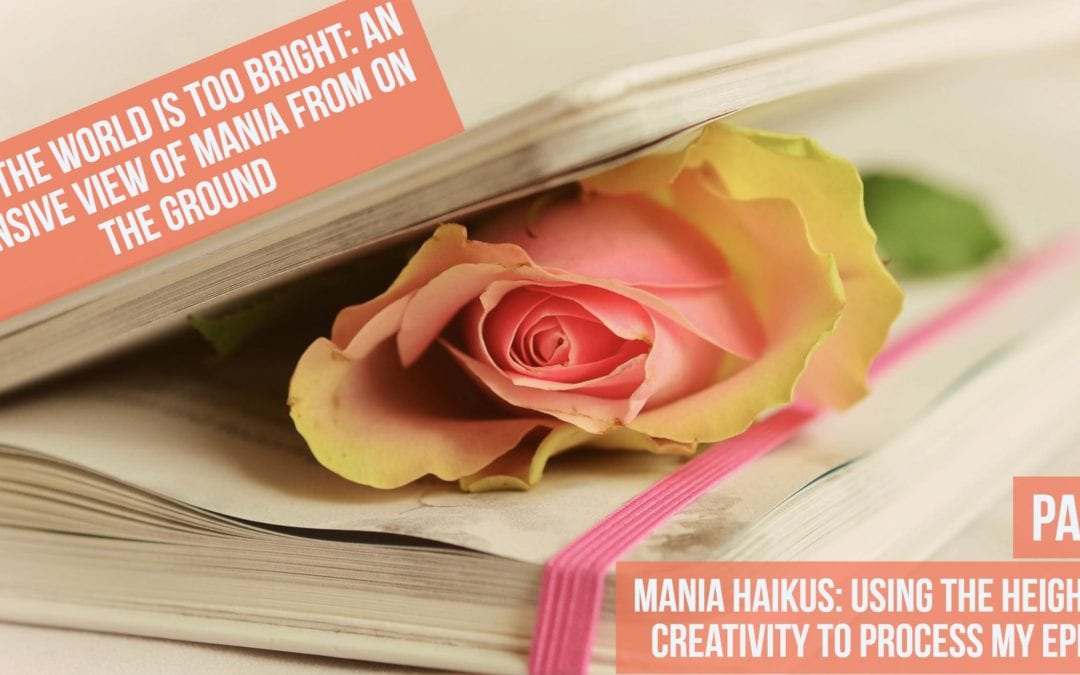This is Part 2 in a 5-Part Series: “When the World is Too Bright: An Intensive View of Mania from On the Ground”
(Read Part 1, Part 3, Part 4, and Part 5 here)
I recently came across the poetry of Nayyirah Waheed. I follow her on Instagram and she posts beautiful, bite-sized poetry. Reading her work makes me want to write poetry, too.
At the beginning of the month (September 2016), I felt the stirrings of mania. There were no spending sprees, nor hypersexuality or racing thoughts. Those are my typical symptoms. This time I only noticed two changes: disturbances in my sleep, and heightened creativity and productivity.
When I was manic in 2015, I incorporated a life coaching company and a social justice curricular consulting company. I was so excited to go into business for myself. I mean, why not? I had all these great ideas – until the mania dissipated. After I came down in 2015, I spent months recovering and settling back into my homeostasis. The two businesses were the last things on my mind.
Yet here I find myself, in September 2016, dusting off the life coaching company and developing curricula for workshop presentations. For the first week of September 2016, I feverishly researched, and wrote, and consulted, and designed. At first, I thought it was normal creative frenzy, but when I didn’t sleep one night, I knew I was teetering into familiar territory. Mania is defined by excess. I was doing too much.
Here are five haikus I wrote to process the mania.
I
Spano excited.
Just like Spano? Yup, Jessie.*
*Jessie Spano from Saved By The Bell
II
Wrote a business plan.
Conducted a survey too:
self-care consulting.
III
I’m Intentional
about self-care coping skills.
Sleep. Breathe. Eat. Shower.
IV
Be in the moment.
Try to calm the energy.
Breathe, breathe, breathe deeply.
This post originally appeared on Manic Monique’s Meanderings.
See the rest of Krystal’s posts for IBPF here. She also blogs at Manic Monique’s Meanderings and for the Huffington Post.
The content of the International Bipolar Foundation blogs is for informational purposes only. The content is not intended to be a substitute for professional medical advice, diagnosis, or treatment. Always seek the advice of your physician and never disregard professional medical advice because of something you have read in any IBPF content.


